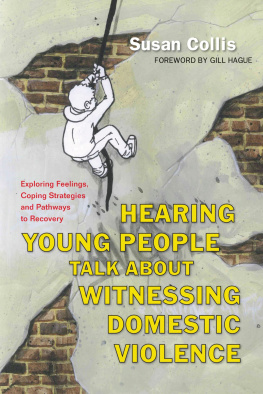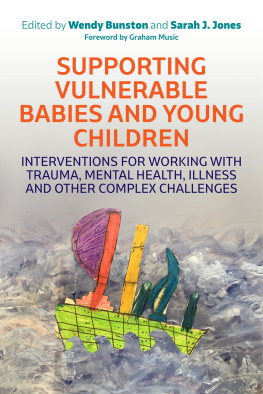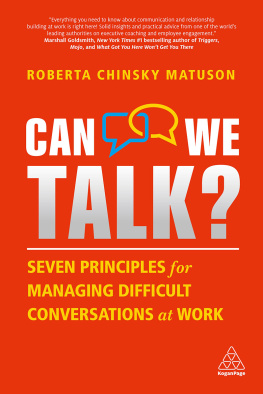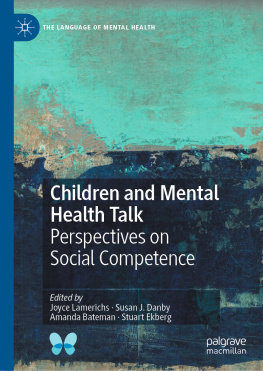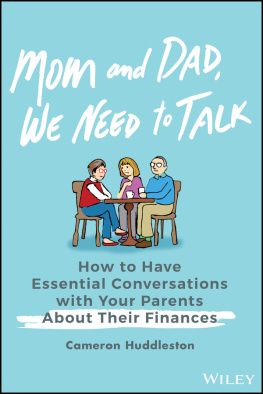CONVERSATION
STARTERS
for DIRECT WORK with
CHILDREN and YOUNG PEOPLE
Guidance and Activities for
Talking About Difficult Subjects
AUDREY TAIT and BECKY DUNN
Jessica Kingsley Publishers
London and Philadelphia
Chapter 1
Introduction
If you have spent time around children, you will undoubtedly have found yourself in one of those difficult moments when you have no idea how to explain something to a child. Whether this is about the finer details of puberty or the origins of the universe, providing an explanation off the top of your head can be challenging. When it comes to more difficult and sensitive subjects, and where emotions may be fraught, it is perhaps no surprise that some adults avoid the subject altogether. Often the decision not to talk to children about difficult subjects is motivated by the desire to protect them from the pain of the truth.
Yet children have a right to know about matters that affect their lives, and need to be supported to understand them. Rather than protecting a child, a lack of communication may have the opposite effect. Children may be aware that something is wrong and use their imagination to erroneously fill in the gaps. They may overhear adult discussion or rumours in the community, and have to deal with this alone, aware that they were not meant to know and therefore unable to divulge that they are aware of the information. In addition, children have a right to have their views heard and their wishes taken into account. This cannot be done in a meaningful way unless the child is provided with all the information required to make a decision (for the purposes of this book, the term child refers to a person up to the age of 16 years).
The authors have experience of trying to talk to children about a number of difficult subjects. Despite recognising that children have the right to be informed, we know it can be hard to give children information, particularly when it may cause them distress. We also recognise that it can be hard to know how to approach a subject, what words to use and how to explain something in a way that is appropriate to the developmental stage of the child. It is out of this experience that we came to write this book, hoping that we would be able to support others to feel more equipped to talk to children.
The main part of the book is divided into chapters organised by subject headings. As well as information, there are activities to support conversation, because we know that play is both the doorway to the childs world, and is also a non-direct (and therefore non-threatening) way of communicating. Practice examples are also found throughout the book, and are anonymised so as to protect the identity of the children and families in question. The word I is also used in these examples to provide further anonymity.
Chapter 2
Preparation
What you say to children when discussing a difficult subject with them is as important as the way in which this is done. Sometimes you may not have much time to prepare, but below we have detailed what is helpful to consider before speaking to a child.
Venue
The venue you choose will depend on the child, their developmental stage and what is practical. Venues are not neutral, however; they will elicit particular memories and emotions for children. For example, someone might choose the head teachers office in a school because it is quiet and a place where you and a child will not be disturbed. However, for some children this room will be a place where they or others are sent when in trouble, and even if this is not the case the head teachers office is a social space associated with power. How you position yourself in the room is also important. As adults, we have a level of authority as well as generally being taller and bigger than children, therefore we would suggest sitting at a level with the child. Often this can involve sitting on the floor alongside them or ensuring that you are at the same eye level as the child. You may also want to think about the child being seated nearer the door, particularly if you are not a familiar adult to them, as this allows them to leave easily if they wish to. Again, if you are not a familiar adult to the child, it is important that the child is made aware of where their safe adult is. The authors would tend to arrange in these circumstances for the safe adult to bring the child to where you are, and spend time speaking with you so the child can see that the safe adult knows you and is comfortable with you. We would then ask permission from the child for their safe adult to leave, making them aware of where their safe adult will be should they wish to go and find them.
Who will speak to the child?
One of the other decisions that needs to be made is who will give the information to the child, and who else, if anyone, will be present. If possible, the information should be given to the child by a familiar and safe adult, but sometimes this cannot be achieved for various reasons. If the most familiar and safe adult feels unable to supply the information, you may agree that they are at least present and able to support the child whilst someone else gives them information. Likewise, the familiar and safe adult may desire to have someone else present to support them. In general, it is advisable to keep numbers to no more than two adults as this in itself can be imposing to the child.
Agreeing what to say
The process of coming to an agreement about what information is to be given can take time. Adults may wish to protect children from having certain information or it may be necessary to protect the confidentiality of another person. Where there is resistance from the adult(s) who is responsible for the child, they may need support and time to get to a place where they can understand the reasons for the child knowing. Be aware that where difficult information needs to be shared, it is possible that family members are themselves having to come to terms with or process information. They might also need support and sensitivity on the part of those around them. This could involve co-working with services for adults, such as counselling.
Key to making the decision about what to say is gaining an understanding of what the child already knows. This may be because people have already given them information, which may be appropriate, but bear in mind it may also have been inaccurate. The authors have experience of children being told incorrect information in order to present the adults in a better light; for example, that a parent is away working rather than in prison, or words have been used that do not correctly detail what is happening; for example, a parent is ill rather than has issues with problematic substance use. Just because a child has been given information, dont assume that they understand it. For example, it can be hard for a young child to understand that they may be prescribed drugs when unwell, but may not be able to live with a family member because that family member takes prescribed drugs (and misuses them). The key to this is to never assume what a child knows, or what their understanding of this is. Check this out with children by asking them to tell you what they think it means. Avoid saying things like do you understand? as this is a closed question that may elicit a yes even if the child doesnt understand. Can you tell me about it? is a better question.
A note on the issue of time pressures


